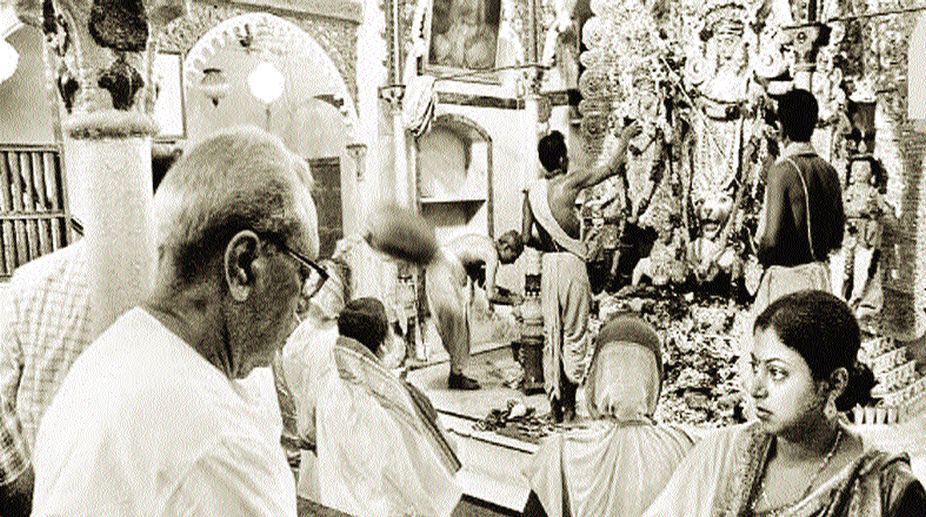Durga Puja in Kolkata is a huge festival, with celebrations involving participation of people across the society. Our grandparents have witnessed the Pujas evolving from family affairs or Para Pujas, to the huge commercial and profit-driven ones of today.
My grandmother turned 75 this year. Her journey through these 75 Durga Pujas has seen many changes. She recalls going to her ancestral house in Hooghly district during her youth.
Advertisement
Her ancestral house hosts a 250-year-old Puja, initiated by one of her great great grandfathers, who was the zamindar of the village. Festivities were more religious there.
She says that people attended the Puja from neighbouring villages all over the district. Members of the family, who lived in Kolkata, visited the village, every year.
First cousin, second cousin, their uncles, aunts, grand uncles and aunts, everyone came together during these five days. Everyone had to work, buy stuff, and make preparations for the rituals. But in the evening, they would gather at one place and sing, recite poems, and catch up with each other.
Elders of the village who visited the house in the evening to meet the family members, often stayed back till dinner. There was no electricity back then, so they would light big carbide lamps.
Food was cooked in a rural style kitchen with earthen stoves. Huge brass utensils were used in making the bhog, which included khichuri, and payesh among a number of other dishes. Community lunches were arranged for all the five days. Numerous people from all over the place came to have their bhog.
She even recollects that the first time she saw a theme puja, she was amazed to see, how a few men could recreate such huge ‘rajbaris’ and wonders such as the Taj Mahal, with merely pieces of bamboo sticks and cloth materials in the middle of the street.
During her days, such barowari (local) Pujas were much smaller in scale, and involved more of a religious touch, than artistic ones.
With passing time, even the occasion at her ancestral home, in Hooghly, has now become more of a social gathering than a religious ritual. People come to the house, meet friends and family from other villages, make merry, and have bhog together.
Nowadays, the idols are made in a beautiful way, some resembling Bankura Dolls, while some resembling Italian or Greek sculptures. During her time, the idols were all of the same kind, devoid of any artistic innovations. So were the mandaps (podium), which were mostly thakur dalans of the big zamindar houses.
However, dedication towards constructing a beautiful ‘pandal’ and pratima (idol) has grown. Barowari Pujas set up themes, which deliver a message or has a social relevance. The beauty of the ancient forms of the idol of Goddess Durga is still held in some of these community Pujas.
Though, she admires the skills and dedication involved in this grand celebration yet senses a loss of soul and piety in the festivities.
Times have changed, so has society. Durga Puja has evolved from being a strict religious ritual to a social event.
Themes have become an important part of the celebrations, be it the ‘World’s Largest Durga’ or ‘Durga with the Thousand Arms’, but Bengalis never fail to add their sweet touch to the revelry.
(Coordinator, Class XII, South Point High School)









